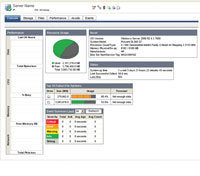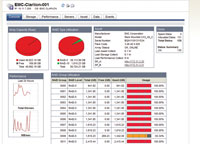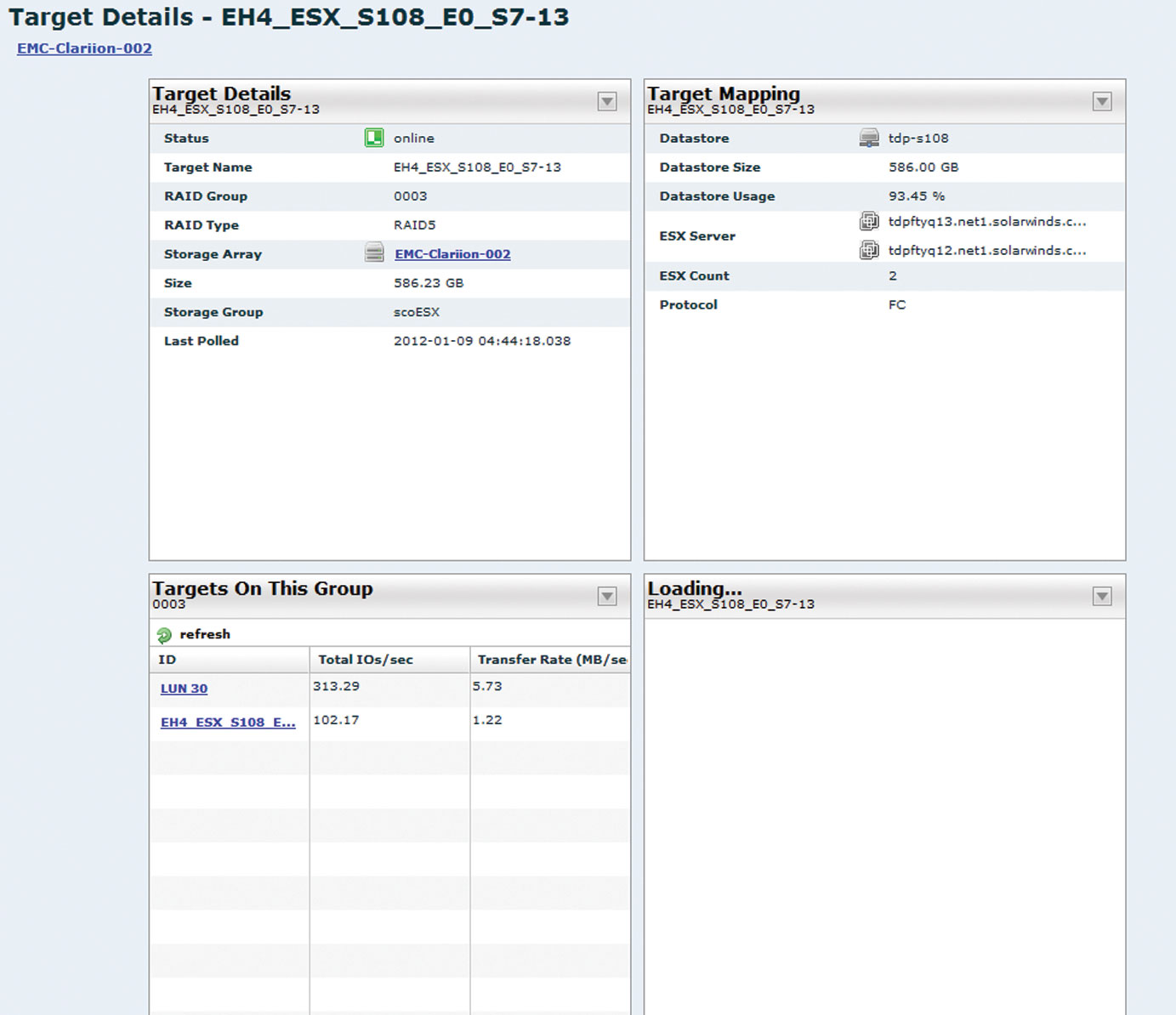Product Reviews
Review: SolarWinds Storage Manager
Centralized monitoring of storage environments helps ease the storage burden for IT pros and users alike.
With SANs and NAS becoming the norm for both the enterprise and personal computing (welcome to the cloud), there's very little that IT staffs can expect users to manage all on their own.
As an all-around IT administrator, I tend to cringe a little when I hear tales of files being stored locally. Many things can happen: problems, crashes, users forgetting to save work, loss of a laptop, and the list goes on and on... Putting critical and working items on some sort of centralized storage isn't only a good idea, but should be required to guarantee backup and availability.
I looked at a piece of software from SolarWinds Inc. that manages storage and provides insight into what's going on in an environment. Because there's no standard definition of cloud, my definition is storage that's not at your desk. If that storage lives on a closed network behind a door, it's in the cloud for my purposes; if that storage is off at Amazon Web Services LLC somewhere, it's obviously in the cloud. It really doesn't matter where the storage lives; it's just not attached directly to you.
Enter SolarWinds
SolarWinds makes monitoring software. The company's products can watch anything from SNMP traffic to disk usage to log files. The Storage Manager product not only provides insight into a slew of arrays that you might be using, but it can also take into account usage of all server disks and anything directly attached to them.
In working with the software for this article, I created a few virtual machines (VMs) and bumped the application against my organization's storage array and our print server. This allowed me to see if there was any difference between a physical server, a virtual server and access to a physical array. In doing so, I found that the physical server was being drilled quite hard (apparently we print quite a lot) and the amount of RAM in the box was insufficient. Adding new RAM solved this problem and was an easy fix.
To manage disks within servers, Storage Manager includes an agent that can be installed on computers you wish to manage. Loading the agent on the physical server returned all kinds of information about the box. I could see not only disk usage, but the installed OS and RAM utilization as well.
Looking at usage information for one computer got me thinking about how good it would be to know this type of stuff for our production environment. The jury is still out on whether that will happen, but more on those details later.
The image in Figure 1 was taken early on in the testing of the product, as you can see by there being very little information. In later stages of testing, the information for the same system was far different.

[Click on image for larger view.] |
| Figure 1. A managed physical computer using SolarWinds Storage Manager. |
What About 'Real' Storage, Such as an Array?
Storage Manager speaks array very well. At the time of this writing, the list of supported array manufacturers out of the box was as follows:
- Dell Inc.
- EMC Corp.
- Hitachi Data Systems Corp.
- Hewlett-Packard Co.
- IBM Corp.
- LSI Corp.
- NetApp
- ONStor
- Pillar
- SGI
- Sun (owned by Oracle Corp.)
- Xiotech Corp.
The list of vendors that this product supports was much better than I expected. When I met with SolarWinds earlier this year at the company's headquarters in Austin, Texas, the presenters mentioned that the product could use a lot of vendor gear, but until I started playing with it I really had no idea just how deep it could get.
During my testing of the "storage" portion of Storage Manager, I found the installation of the EMC SMI-S provider to be straightforward. The SMI-S provider allows Storage Manager to interact directly with the array controller and to retrieve any information about usability and overall performance.
Once the server was collecting via the SMI-S provider, a great deal of information became available, including LUN mappings, LUNs, storage targets and overall resource usage. Because there were some issues in my test environment, I also worked with the SolarWinds demo environment for Storage Manager to ensure I was able to see all of the available items.
I went through the setup of the app and SMI-S to get a feel for the process, which was really straightforward.
Storage Manager can work with multiple arrays from multiple vendors at one time. These arrays can be grouped to keep units from a particular vendor such as EMC together if there are multiple arrays in an environment. When looking at a storage array, the allocated capacity and raw disk capacity can be seen at a glance, as well as RAID group allocations (and information pertaining to these raid groups), as shown in Figure 2.

[Click on image for larger view.] |
| Figure 2. Top-level view of an EMC Clariion array in SolarWinds Storage Manager.
ProductReview |
Selecting the storage component within a particular array shows further details about storage allocation. Additional sub-reporting for views on a particular array is also available depending on the section you're viewing. For example, selecting the LUNs link from the Storage tab will show all the details of each LUN found on an array. Selecting one of the listed LUNs (by clicking on its name) will show how it's being used as well as what the usage is.
Note: These detailed reports are Flash-based and will not work if Flash is not installed.
Figure 3 shows a portion of the detailed LUNs report on an EMC Clariion array. This information can be helpful in locating LUNs in an environment that's busy and seeing if some of the workloads on these LUNs might be better served by moving to other LUNs.

[Click on image for larger view.] |
| Figure 3. A report in SolarWinds Storage Manager showing the details for a selected LUN. |
I did find that configuring Storage Manager to see an actual array was not as straightforward as I had hoped, but working with the Storage Manager product team at SolarWinds, I was able to get things resolved without too much effort. The biggest trouble I noticed was finding the time to dig into the application and really understand what was and was not working. This is a large product that has a great deal of moving parts but also provides loads of information that can help your environment run better. When you're looking at it, either in a demo or your own evaluation, be sure to leverage resources such as support from SolarWinds to help you get the product running at its best.
It seems you can't discuss storage anymore without someone bringing up virtualization -- and until I started building a virtual environment, I really wasn't sure how this always managed to come up. Because the VMs need somewhere to call home, networked storage is a great fit -- and as an added bonus, Storage Manager gets into virtualization, too.
Watching the usage of virtualized servers seemed to me to be similar to watching physical servers, but I quickly found out that virtualization exposes quite a bit more information to help with planning and overall utilization of guest resources on a per-VM basis. It also shows all of the resources being consumed on the host.
Looking at one VM is helpful to see how a workload is doing, but the power of the virtualization portion of this application is in its ability to show capacity details and help in the planning of workloads and overall growth in both storage and hosts within an environment. Detailing the number of running VM workloads against capacity and emergency scenarios is something I came across in planning for growth of a virtual environment. This information can be indispensable and certainly works better and more cost effectively than guessing.
Working with storage and virtualization together within one tool has been very helpful, but I've found that the virtualization side of the equation is where I spend most of my time, at least for now. Being able to plan for growth and see how much utilization is happening really puts the details in an easy-to-read format that can be used to help justify when more host machines, resources for existing host machines or storage will be needed to keep an environment moving.
Storage Manager Pricing
First, there's a free trial available for 30 days from solarwinds.com. I definitely encourage downloading the trial before making the investment to purchase the software; however, when you download the trial, if you haven't used tools from SolarWinds before, ensure that you have a good amount of time within the 30-day period to dig into the product. Because the investment -- the price starts at $2,995 -- is not small, being ready to hit the ground running when the purchase happens will be a benefit to you. Plus, you'll be able to properly demo the product to management in your organization to justify the cost.
Included with the cost of the application (as long as your maintenance remains current) are any upgrades to the software. If SolarWinds releases a minor fix, you can download it; also, when the next major version is released, you can upgrade at no additional cost. Being able to lump the cost of support and upgrades into the cost of the software and a portion for maintenance can also help justify the cost of the product.
How to Get Help
As with any application, there's always a solid chance that at some time during your use of the product you'll need some support. SolarWinds has a great community forum called Thwack for getting help from other users. You can register at thwack.com to get started. Using this community-driven resource will also get you help from the staff at SolarWinds, on occasion. If the problem can't be corrected in the forums, you can open a ticket with SolarWinds support and get help that way as well. The help desk staff and product support staff are very knowledgeable and easy to work with. Normally, I don't like to go right to the "how to get help" information when looking at a product, but the experience I had with SolarWinds was great.
| REDMOND
RATING |
Installation:
20% |
9.0 |
Features:
20% |
8.0 |
Ease of Use:
20% |
8.8 |
Administration:
20% |
9.0 |
Documentation:
20% |
8.6 |
Overall
Rating: |
8.7 |
Key: 1: Virtually inoperable or nonexistent 5: Average, performs adequately 10: Exceptional
|
|
|
Overall Thoughts
After using Storage Manager for some time, I'm quite impressed with the product. In addition to the overall ease of use, after a few bumps in the road I think the product is helpful. At its current price point, it's reasonable for small and midsize businesses if they have a significant investment in storage and virtualization, or are planning one.
SolarWinds Storage Manager
Pricing starts at $2,995; free 30-day trial available
SolarWinds Inc. | 866-530-8100 | solarwinds.com
About the Author
Derek Schauland has worked in technology for 15 years in everything from a help desk role to Windows systems administration. He has also worked as a freelance writer for the past 10 years. He can be reached at [email protected].